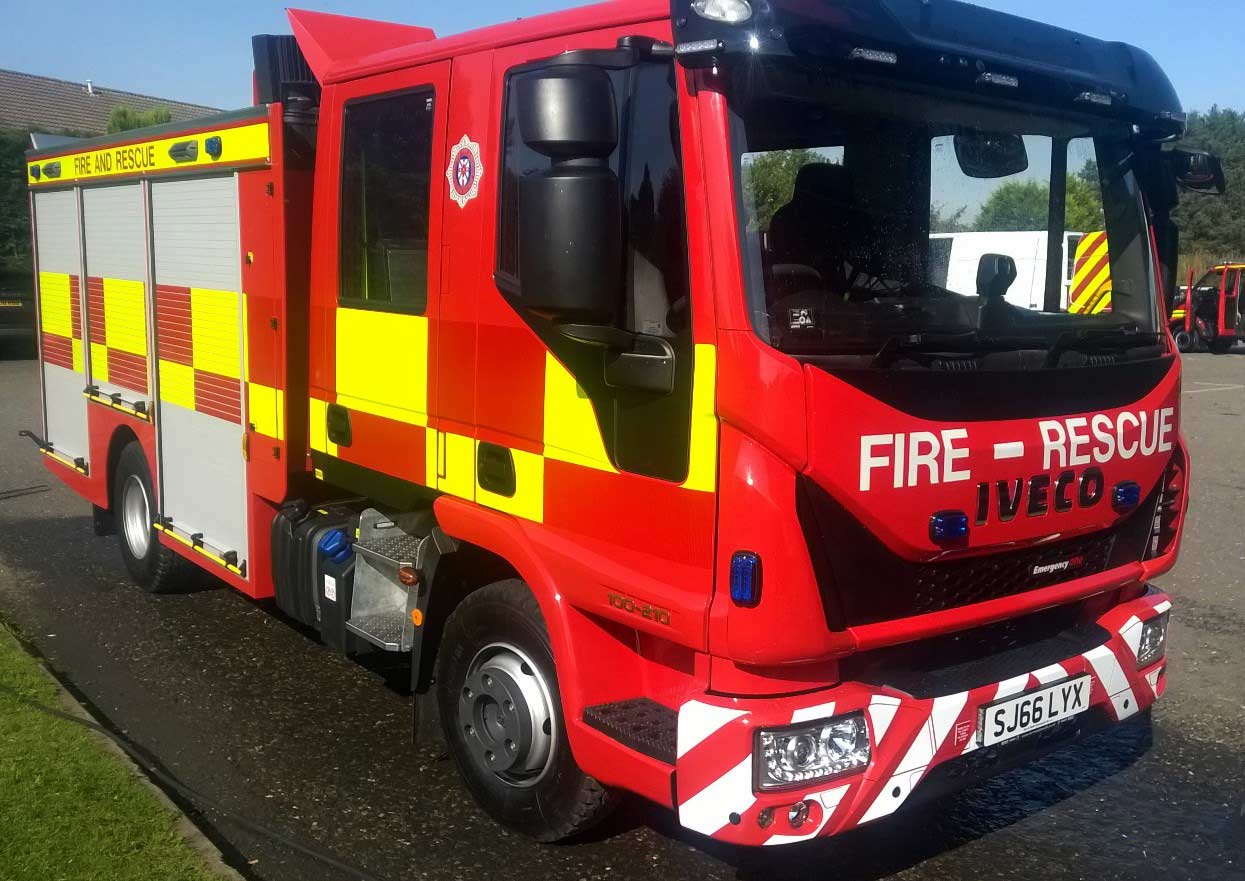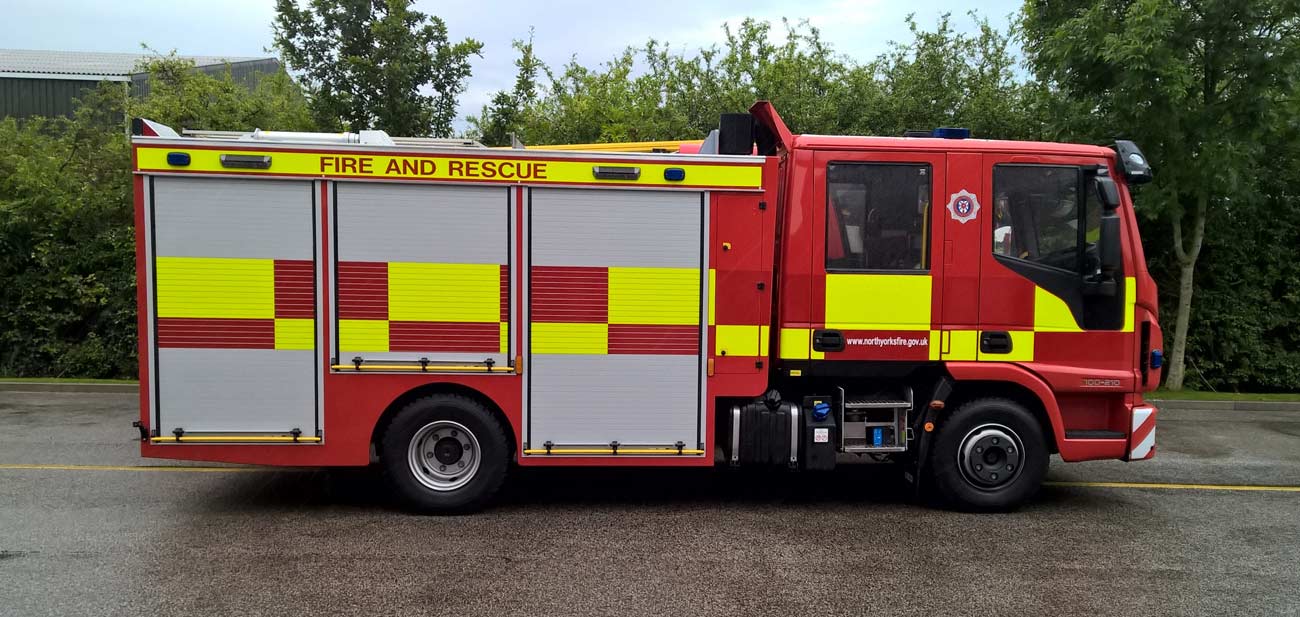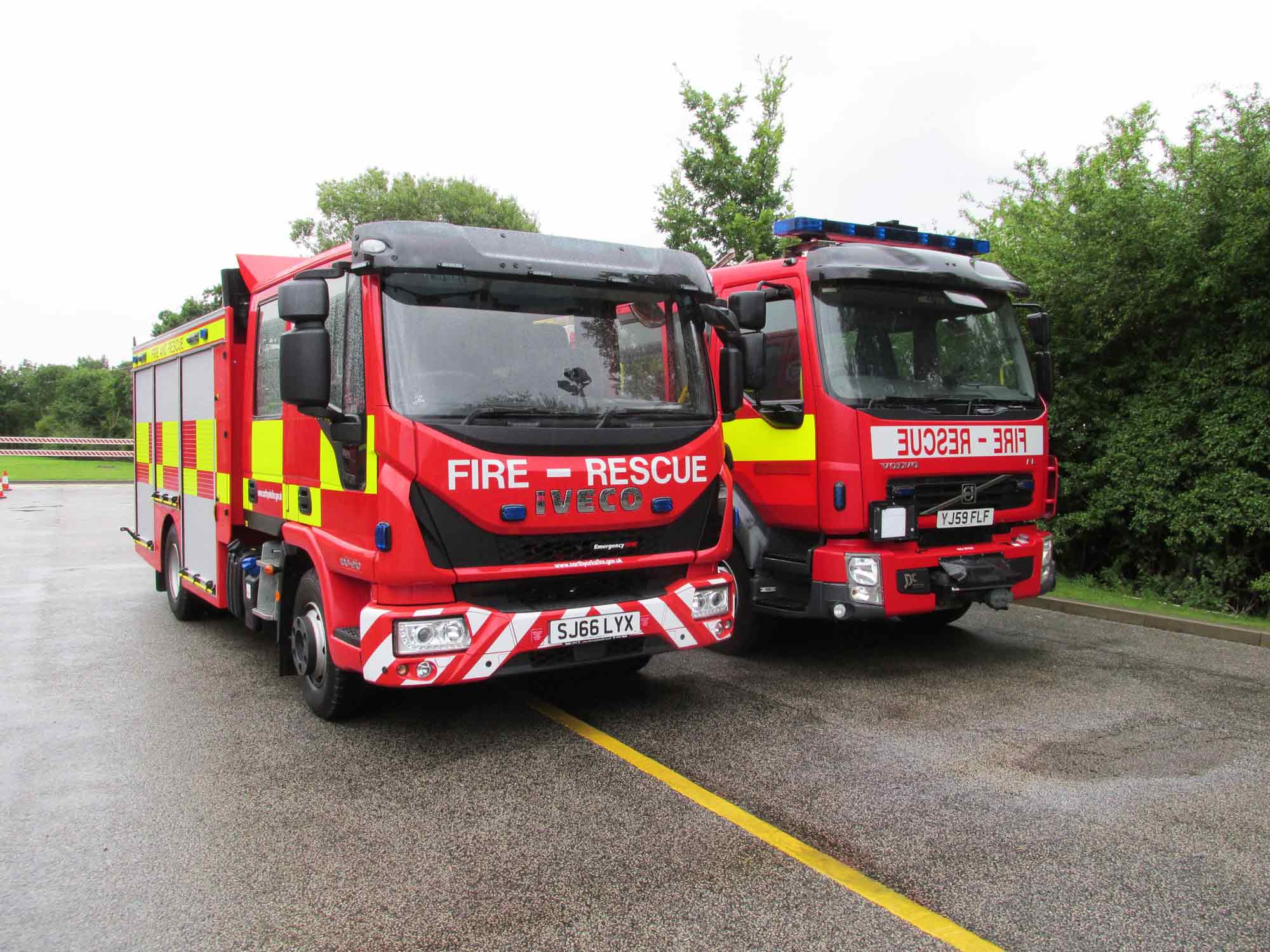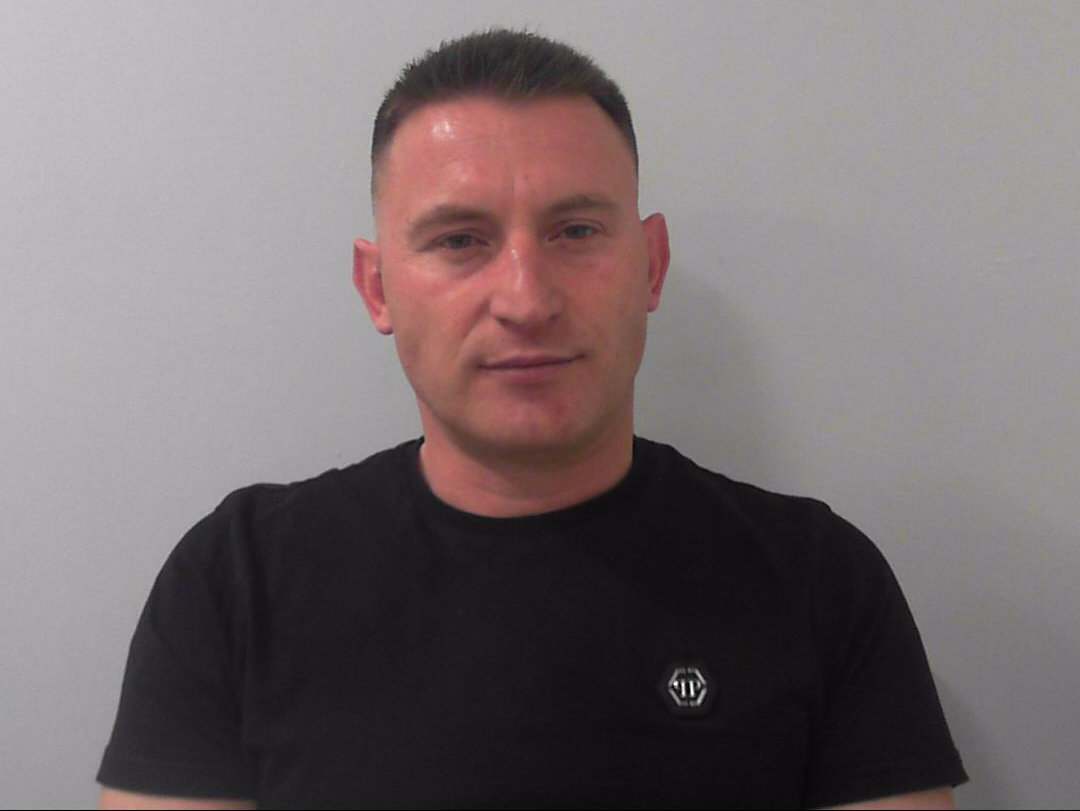At its meeting in December 2015, the Fire Authority approved a number of changes as part of the Fire Cover Review which was undertaken in 2014 and 2015.
This included the introduction of Tactical Response Vehicles (TRVs) at Harrogate, Malton, Northallerton, Ripon, Scarborough and Tadcaster fire stations. At Harrogate and Scarborough the TRV will replace one of the two standard shift crewed fire engines, and at Malton, Northallerton, Ripon and Tadcaster it will replace the standard day crewed fire engine.
The first four of these vehicles have now arrived with the Service. They have the same standard pump as a normal fire engine and modern equipment such as battery operated cutting equipment. They are now being fitted out and will be available for staff to start training over the next few months
The vehicles have been custom built to meet the needs of a modern fire and rescue. The vehicle and equipment have been designed, in consultation with staff and others, to be operated by fewer staff than a standard fire engine.
The TRVs at Scarborough, Northallerton and Tadcaster are likely to start responding to incidents from January or February 2017, with Harrogate’s likely to start attending incidents from April 2017. Malton and Ripon’s are anticipated to start responding to incidents from Autumn 2017.

They will respond to, and be able to deal with, small incidents, such as bin fires, on their own and will be sent along with standard fire engines to larger incidents such as house fires and road traffic collisions.
The reduction in staff at Harrogate and Scarborough stations will see an eventual reduction from 48 wholetime firefighters to 36. At Malton, Northallerton, Ripon and Tadcaster there will be an eventual reduction from 12 wholetime firefighters to six. These reductions in staff will occur through naturally occurring movements and leavers.
The response times for the TRVs will remain the same as for the current fire engines and there are no changes to crewing or response times for the other fire engine, on each of these stations.
The reduction of crewing in these vehicles is being phased over the next two to three years, and on-going reviews will take place during the introduction of the vehicles before moving to each new phase.

Chairman of the Fire Authority, Cllr John Fort said:
A modern fire and rescue service is expected to provide an emergency response that reflects changes in risk. These vehicles and the new way of working using them, will provide an excellent professional response to emergencies, appropriate to the risk in those areas.







